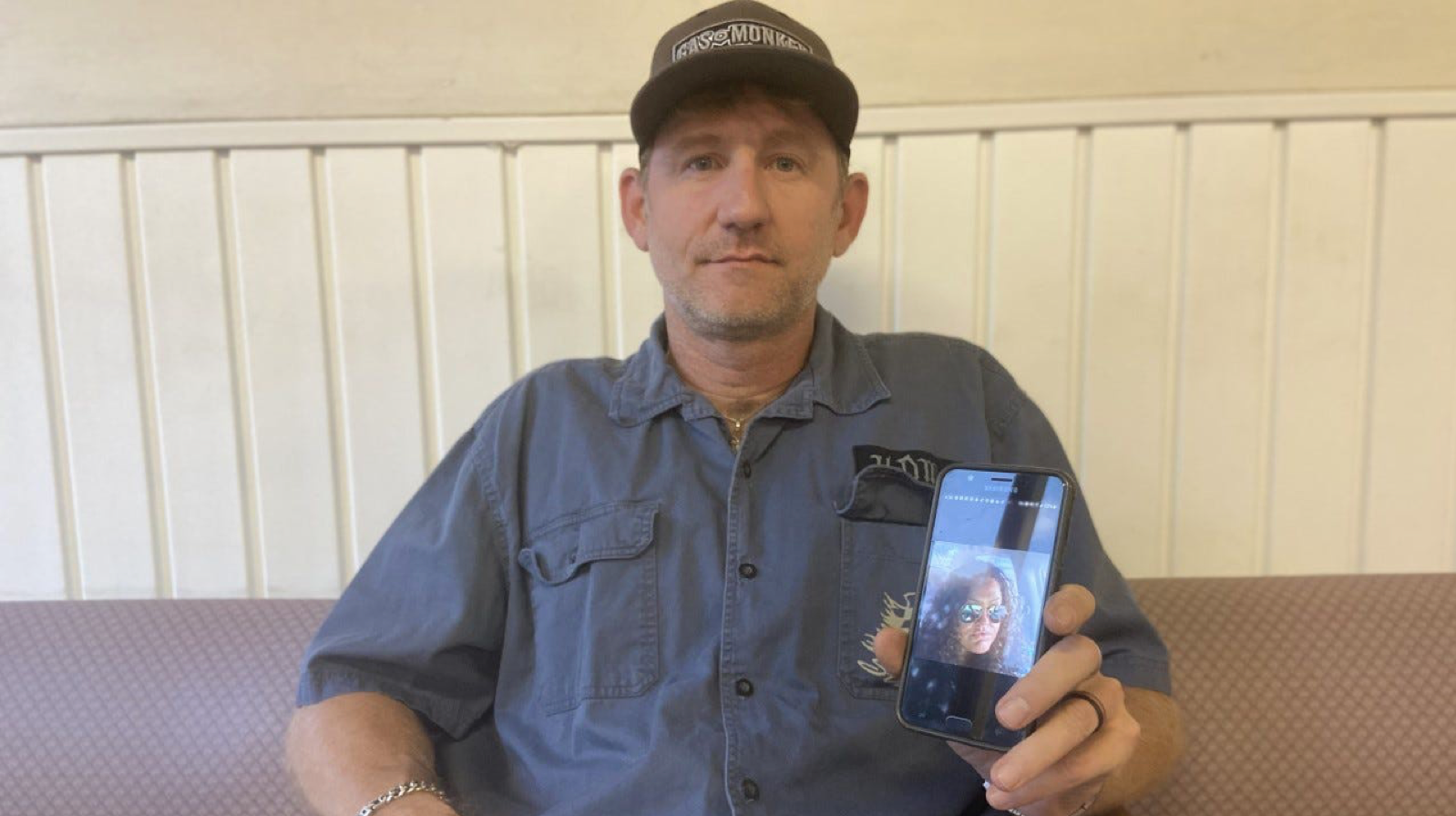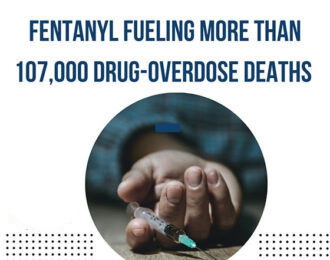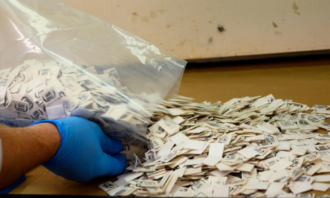Why is fentanyl so dangerous? The illicit drug has ruined lives during COVID pandemic

USA Today – October 2021
Author: Asha C. Gilbert
Comedian Fuquan Johnson. The 16-year-old “Flash” actor Logan Williams. “The Wire’s” Michael K. Williams.
These famous names are just a few of the recent accidental overdose deaths linked to fentanyl. During the COVID-19 pandemic, more drugs have also been found contaminated with the deadly drug.
There are stories like Brenda Brett’s, a beloved cousin and Georgia-native who relatives say had no idea she was taking Xanax laced with fentanyl.
She didn’t want to die, they insist. Her aunt found her lifeless body collapsed over her nightstand, and her boyfriend also dead, wedged between their bed and a wall.
They are just a few of the 40,000 Americans who die every year with toxic levels of opioids in their body, a problem exacerbated by a hard-to-detect synthetic version of the drug that experts warn is flooding the market and rapidly making its way into the hands of unsuspecting users.
Fentanyl – 80 to 100 times stronger than morphine – has become the leading cause of overdose deaths in America along with other synthetic opioids, according to the National Institute on Drug Abuse. Overdose deaths hit a new record in the U.S. at 96,779 from March 2020 to March 2021 in lieu of the pandemic, according to the Centers for Disease Control and Prevention.
That number is expected to rise to almost 100,000.
Often made in labs, the illegal version is sold as powder or put into pills that look like prescription drugs. Even a grain-sized amount can kill.
“Fentanyl is taking over the illicit market,” Dr. Nora Volkow, director of NIDA, told USA TODAY.
What is fentanyl?
Fentanyl was first developed in 1959 as a potent painkiller used in clinical settings via IV. In the ’90s, patches were made so patients could receive the drug topically, most often cancer patients or those being treated for chronic pain, according to an article from the American Pain Society. Then came lozenges and tablets.
It didn’t take long after that for the drug to hit the illicit market.
Fentanyl is much more powerful than heroin and morphine, but it activates the same opioid receptors in the brain. Because tiny amounts can create the same highs for users, it’s a cheaper and more appealing option for drug deals, says Dr. Nora Volkow.
“Drug dealers are maximizing their profits by lacing or contaminating drugs like heroin, cocaine and methamphetamine with fentanyl,” Volkow said. “By doing that they are making them much more powerful and this is at the essence of the most challenging problems that we have.”
“This is worse than the crack epidemic.”
A fatal dose of fentanyl is small enough to fit on the tip of a pencil, according to a public safety alert from the U.S. Drug Enforcement Administration.
In 2016, NIDA began to see an increase of overdoses tied to fentanyl that has continued to rise.
The Center for Disease Control and Prevention reported there was a 38.4% increase in synthetic opioid deaths from June 2019 to May 2020. State and local health departments tied the increase to illicitly manufactured fentanyl.
Deaths from the drug had previously been concentrated in 28 states east of the Mississippi River, but 10 western states saw a 98% increase in synthetic opioid overdoses in the same time frame, the CDC reported.
The increase was consistent with larger quantities of fentanyl being manufactured and positive fentanyl toxicology drug tests administered during COVID-19 the pandemic.
Report: Former NHL player Jimmy Hayes, 31, had fentanyl, cocaine in system at time of death
‘A national emergency’: 1.8 million counterfeit pills seized, flood of fake meds driving record overdose deaths
“Most of fentanyl overdoses are in combination with other drugs like heroine, cocaine and methamphetamine,” Volkow said. “It is all over the place from the East Coast, West Coast and the center of the United States.”
She said drug users who do not typically take opioids, but use cocaine or amphetamines, are at an increased risk of overdosing from fentanyl.
“They get the drug and unbeknownst to them, it is contaminated with fentanyl and they do not have the opioid tolerance.”
The contamination of fentanyl has increased in 2020 during the COVID-19 pandemic all the way down to urine collected by rehab facilities, according to Volkow.
How has the pandemic has affected fentanyl use?
The amount of fentanyl seized by U.S. Customs and Border Protection has increased by 51.45% in the first 8 months of 2021 compared to 2020, according to data from the CBP.
Last month, 1,123 pounds of the drug were confiscated compared to 702 pounds in August 2020.
Some of the seizure made headlines like in Memphis where 2.85 kilograms of fentanyl were found in wooden display boxes shipped from Mexico and $182,000 in fentanyl was seized from within a vehicle during a routine examination at the Brownsville, Texas port of entry from Mexico.
“As fentanyl is in powder or pill form and highly potent, small amounts smuggled can still be profitable. Smaller amounts mean there are more ways in which it can be concealed in smuggling attempts,” Matthew Dyman, CBP public affairs officer, told USA TODAY in an email.
He said drug increases are likely due to a massive increase to illegal migration.
“The COVID travel restrictions hindered some aspects of land border drug trafficking, as there was less traffic and more time could be spent examining travelers, which increased drug seizures, but with people staying home instead of going to work, there was an increased demand for drugs,” he said.
“There are a lot of contradictory ups and downs.”
It’s not uncommon after disasters, such as the 9/11 attacks, to see a temporary increase reported in substance use.
“We see with other major events people are feeling traumatized and under stress,” said Dr. Andrew Saxon, a member of the Council on Addiction Psychiatry at the American Psychiatric Association. “An easy and natural way to cope would be to take a substance, even though it usually makes it worst in the long-run.”
Most of the surveys conducted since the pandemic began have centered around alcohol and cannabis usage.
Nearly 1 in 5 report ‘heavy drinking’: Americans are using alcohol to cope with pandemic stress
When overdoses do happen, Saxon said it can be hard to determine if it was unintentional or suicide because many people are taking opioids alone.
“Some of the increase in overdose deaths could actually be an increase in suicides because of the increase in depression and the feeling of hopelessness,” Saxon said. “Overdoses from all drugs went up in 2020.”
Fentanyl hits home
Shawn Keyes, 44, was prescribed fentanyl patches when he was diagnosed with malignant melanoma skin cancer while in prison in 2003.
Keyes used the patches and a slew of other opiate prescriptions to soothe the pain from the chemotherapy. He would later develop an opioid addiction.
When he was released from prison, he found fentanyl easily on the street but said he quit cold turkey when his mother was diagnosed with cancer.
Although his addiction to the drug was lifted, a family tragedy reared fentanyl back into his life.
In 2017, his cousin Brenda Brett and her boyfriend died from accidental fentanyl exposure after ingesting what they thought were pressed Xanax pills, according to Keyes.
“My aunt found them dead,” Keyes said. “My cousin looked like she had tried to get up off the bed but had fallen over onto the nightstand and her boyfriend was wedged in between the bed and the wall.”
Keyes said Brett was very outgoing, enjoyed having fun and had classic “middle child syndrome'” – she loved to be the center of attention.
According to Keyes, he was her favorite cousin and has fond memories of Brett trying to visiting him while he traveled the country.
“She had her troubles over the years but when she died, the world lost a huge bright light,” Keyes said. “She was a great person who hated bullies and would stick out her neck for anyone.”
Her overdose was investigated by the Georgia Bureau of Investigations and the autopsy viewed by USA TODAY found traces of Xanax, amphetamine, methamphetamine, morphine and fentanyl in her blood.
Brett had 7.7 micrograms per liter of fentanyl in her system when she died. The GBI told USA TODAY via email that determining a general concentration of how much fentanyl in a system is deadly, is determined on a case by case basis.
A peer-reviewed study published in the journal Annals of Palliative Medicine titled “Reasons to avoid fentanyl” said doses greater than 3 nanograms per liter can cause central nervous system depression and loss of airway reflexes.
Brett had 7,700 nanograms.
“This has been a real issue with pills being sold on the internet and down the street,” David Dietz, professor and chair of pharmacology at the University at Buffalo, told USA TODAY.
“Saying for certain if she would be alive if fentanyl wasn’t laced in the pill can’t be determined because there are inherent risks with taking prescribed medications in the absence of a physician oversight and order.”
Dietz said taking drugs that aren’t prescribed to you or off the street can potentially cause serious harm due to people not knowing how it will affect their health and not knowing what it contains.
Fentanyl addiction is killing my son:California drug laws enable him instead of helping.
‘It’s your little brother’: Two years after his overdose, I still listen to that voicemail
“You take something you think is Xanax and it is laced with fentanyl,” he said. “Even if the drug was the amount they thought it was, the user doesn’t know how their own risk factors play a role.”
Brett had previously struggled with addiction to methamphetamine, but before her death told Keyes she considered herself sober because she wasn’t using her drug of choice.
“She had done enough drugs in her time to know the danger of taking fentanyl, and I don’t think she would of voluntarily taken it,” he said.
Dietz said fentanyl being laced into other drugs is adding fuel to the growing opioid epidemic and being found everywhere.
“This is a problem across all classes and age groups,” he said. “It’s become a real issue.”
Drugs are becoming ‘much more dangerous’
In most cases, it is very difficult for users to determine a drug is contaminated with fentanyl unless they use a drug testing tool available to users – a fentanyl strip test.
“The use of strip can be very useful because many people taking stimulants do not seek out fentanyl,” Volkow said.
The strip test, expanding access to naloxone – a medicine that reverses an opioid overdose – and education are tools Volkow says are needed to curb fentanyl use.
To people who may be considering experimenting with drugs, Volkow said highlighting the devastation of addiction is key.
“People may say well it’s no big deal to experiment and the rates are in my favor.” she said. “But the reality is that drugs are much more dangerous than they were in the past.”





